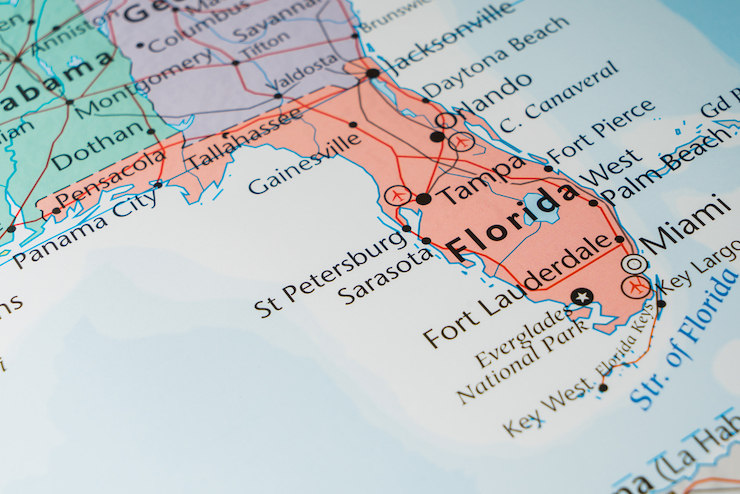2023 Average Florida Homeowners Insurance Rates By County

Homeowners insurance is a crucial aspect of safeguarding one's property, providing financial protection against unforeseen events like natural disasters, theft, and accidents. In the sunshine state of Florida, however, homeowners often grapple with higher-than-average insurance rates. In the information below, we would like to delve into the average homeowners insurance rates per county in Florida and the factors contributing to the relatively high prices.
Average Homeowners Insurance Rates in Florida by County:
The table below illustrates the average homeowners insurance rates across various counties in Florida. The figures are based on recent data, and it's important to note that actual rates can vary depending on individual circumstances. The average monthly premium is to show the breakdown in cost but it is important to know that most homeowners policies are paid annually.
| County | Top Cities Include | Average Monthly Premium ($) | Average Annual Premium ($) | Average Premium Range |
| Miami-Dade | Miami | $315 | $3,780 | $3,500 - $4,500 |
| Broward | Fort Lauderdale | $295 | $3,544 | $3,200 - $4,000 |
| Palm Beach | West Palm Beach | $271 | $3,254 | $3,000 - $3,800 |
| Hillsborough | Tampa | $245 | $2,943 | $2,800 - $3,500 |
| Orange | Orlando | $236 | $2,832 | $2,700 - $3,300 |
| Duval | Jacksonville | $228 | $2,739 | $2,500 - $3,000 |
| Pinellas | St. Petersburg | $210 | $2,522 | $2,400 - $2,800 |
| Lee | Fort Myers | $192 | $2,309 | $2,200 - $2,600 |
| Collier | Naples | $182 | $2,189 | $2,000 - $2,400 |
| Sarasota | Sarasota | $159 | $1,911 | $1,800 - $2,200 |
Factors Influencing High Insurance Rates:
-
Hurricane Risk: Florida is prone to hurricanes, and the state's coastal counties are particularly susceptible to wind and flood damage during hurricane seasons. Insurers factor in this heightened risk when determining rates, resulting in higher premiums for residents in coastal areas like Miami-Dade, Broward, and Palm Beach.
-
Flood Vulnerability: Florida's flat topography and proximity to the sea make it susceptible to flooding. Since standard homeowners insurance policies typically do not cover flood damage, residents may need to purchase additional flood insurance, contributing to higher overall costs.
-
Population Density: Counties with higher population densities, such as Miami-Dade and Broward, often experience more claims due to increased housing density. This, in turn, leads to higher insurance rates as insurers spread the risk among a larger number of policyholders.
-
Building Materials and Construction Standards: The stringent building codes in Florida, especially in coastal areas, demand structures to be built to withstand hurricane-force winds. While these codes enhance property resilience, they also contribute to higher rebuilding costs, influencing insurance rates.
-
Claims History: Frequent claims in a specific area can impact insurance rates. If a county has a history of significant claims, insurers may increase premiums to mitigate potential future losses.
-
Economic Factors: Economic conditions can also influence insurance rates. Counties with a higher cost of living and property values may experience elevated insurance premiums.
Understanding the average homeowners insurance rates per county in Florida provides homeowners with valuable insights into the factors influencing these prices. While the state's vulnerability to natural disasters is a significant contributor, other elements such as building codes, population density, and economic factors play crucial roles in determining insurance costs. Residents should carefully assess their specific needs and consider these factors when selecting insurance coverage to ensure they are adequately protected without overpaying for unnecessary coverage.
